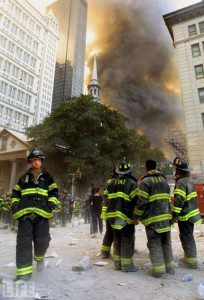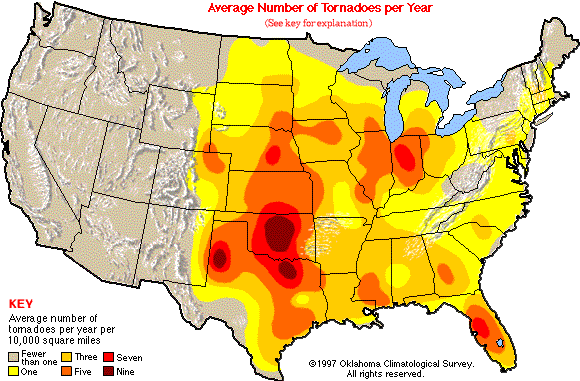As we were reviewing the events that led up to adding 3178-P Proposed Rule into the Federal Register, we looked back over the available guidance going back to 9/11 to identify sources that might have saved lives in Katrina and other major disasters. We found two documents worth reviewing, both of which were supported or produced by the Joint Commission, and both of which were post 9/11 and pre-Katrina:
Health Care at the Crossroads 2003
 This white paper offers very good Emergency Management guidance that stands the test of time; TJC makes strident arguments that in a post-9/11 we no longer had the option to push off deep and wide emergency planning. Â This document would begin to lay the foundation; unfortunately the actual standards did not begin to reflect this level until 2007 and even after Katrina, the industry pushed back on updated standards to the point where they were not officially scored in 2008. And there was not nearly the same ardor to enforce the new standards as would be suggested in the White Paper.
This white paper offers very good Emergency Management guidance that stands the test of time; TJC makes strident arguments that in a post-9/11 we no longer had the option to push off deep and wide emergency planning. Â This document would begin to lay the foundation; unfortunately the actual standards did not begin to reflect this level until 2007 and even after Katrina, the industry pushed back on updated standards to the point where they were not officially scored in 2008. And there was not nearly the same ardor to enforce the new standards as would be suggested in the White Paper.
Excerpt 1 “The purpose of this report is to frame the issues which must be addressed in developing community-wide preparedness and to delineate federal and state responsibilities for eliminating barriers, and for facilitating and sustaining—through leadership, funding and other resource deployment — community-based emergency preparedness across the United States.â€
Excerpt 2: “This white paper is the second work product of the Joint Commission’s new Public Policy Initiative. Launched in 2001, this initiative seeks to address broad issues that have the potential to seriously undermine the provision of safe, high-quality health care and, indeed, the health of the American people. These are issues which demand the attention and engagement of multiple publics if successful resolution is to be achieved.â€
Excerpt 3 (Objectives)
â€III. Establish accountabilities, oversight, leadership and sustainment of community preparedness systems
• Develop and implement objective evaluation methods for assessing the substance and effectiveness of local emergency preparedness plans.
• Provide funding at the local level for emergency preparedness planning.
• Explore alternative options for providing sustained funding for hospital emergency preparedness activities.
• Initiate and fund public-private sector partnerships that are charged to conduct research on and develop relevant, scalable templates for emergency preparedness plans that will meet local community needs.
• Disseminate information about existing best practices and lessons learned respecting existing emergency preparedness initiatives.
• Clarify the applications of EMTALA, HIPAA, EPA and other regulatory requirements in emergency situations.
• Coordinate domestic and international emergency preparedness efforts. â€
We applauded this approach and worked with clients to improve the level of emergency readiness by embracing these themes. Unfortunately, actions need to follow words if there is to be any real evolution or change. Â With regulators clamoring for increased attention on readiness, TJC tried to quell the arguments for increased preparedness with this kind of report, Â Â however, even after hundreds of deaths in New Orleans, lack of follow through on the issues remained a problem five years later, and some would argue even today, setting the stage for CMS 3178-P.
A perennial issue with TJC is the apparent conflict of interest between those making the rules, scoring them and consulting to make the survey takers “ready†to pass the survey. A quick review of the contributors of this report and the next underscores the revolving door between academia, government and industry, and despite the learned contributions to the reports, after following the industry for the past 30 years, we have yet to see any true “Profiles in Courage†among them.
Standing Together: An Emergency Planning Guide for America’s Communities
This report, published in February 2005, offered and even higher level of guidance on emergency preparedness, produced by TJC in collaboration with Illinois Department of Public Health and Maryland Institute of Medical Services Systems and the National Center for Disaster Preparedness at Columbia University.
Excerpt 1
“Despite the passage of four full years since September 11, 2001, many small communities in the United States are struggling to meet the mandate for emergency preparedness and response that would enable them to function on their own in the hours or days, before help arrives from regional, state, and federal sources. Readiness barriers include lack of clarity about who is responsible for preparedness and response planning, what elements of the planning and response processes are critical, how to coordinate with state and federal emergency management programs, and how to obtain and sustain funding. Whenever or whatever disaster or mass casualty event occurs, community and local response will be key to survival; communities must look to themselves and adjoining communities for answers.â€
It seems ironic and even comical looking back that this report gives an impression that the elite, large urban medical centers were assumed to be ready for whatever the terrorists or mother nature could send their way. Despite large taxpayer grants to these institutions, particularly in NYC, evidence shows that even ten years later, with a week long forecast, that a major medical center could lose emergency power and be forced to evacuate their most fragile patients down dark and flooded stairwells. Ironically in the same neighborhood as the above mentioned Columbia University Institute co-author of the report.  The report is very thorough with tools and guidance and sidebars that capture the key points. Had the guidance been adopted from Excerpt 2 on page 47’s sidebar, it could be argued that many lives and much property could have been saved in New Orleans and prevented the emergency evacuation of NYC hospitals during Sandy. We were surprised at the word “mandate” in the above guidance because while even as we look at the Proposed Rule, it still seems to be an issue of whether the standards are mandated or voluntary. We expect that with a few exceptions, the proposed rule will be mandated.
Excerpt 2
“The major information categories of the draft guidelines in development at the Greater New York Hospital Association include the following:
Communication considerations: internal phone switches, analog phone lines, long-distance service provider trunks, runner system, radios, walkie-talkies, cell phones, overhead speaker and paging system, stand-alone computer and Internet access, access to external information systems, communications directories, and vendor contact numbers.Â
Power considerations: standards, fuel supplies, supplemental emergency generators, operation of emergency generators, placement and security of emergency generators, elevators, radios, critical equipment, and contingency planning.â€
 The arguments that flood levels were unexpected do not hold water in the case of Katrina or Sandy, the former six months after publication of the report and the latter almost ten years later with the benefit of hindsight for hurricanes Wilma, Gustav, Irene, Charley, Katrina and others during the interim. One of the key features widely criticized in the Proposed Rule is that emergency generators should be tested more often and we agree that testing alone will not solve the problem as long as generators remain below the flood line as they were in Katrina and Sandy. Some public comments questioned the need to move generators above the flood plain even after this overwhelming evidence. Our response to this is that sometimes regulation is required to reduce risk to a trusting public for those who seem to place profit above life in their risk assessments.
The arguments that flood levels were unexpected do not hold water in the case of Katrina or Sandy, the former six months after publication of the report and the latter almost ten years later with the benefit of hindsight for hurricanes Wilma, Gustav, Irene, Charley, Katrina and others during the interim. One of the key features widely criticized in the Proposed Rule is that emergency generators should be tested more often and we agree that testing alone will not solve the problem as long as generators remain below the flood line as they were in Katrina and Sandy. Some public comments questioned the need to move generators above the flood plain even after this overwhelming evidence. Our response to this is that sometimes regulation is required to reduce risk to a trusting public for those who seem to place profit above life in their risk assessments.
 We are in the middle of tornado season and on the cusp of the 2014 hurricane season. It is clear that large-scale weather events will continue to pose big challenges to healthcare providers, with the recent tornados across the South causing at least 34 deaths and hundreds of injuries in the last week alone. In conducting your All Hazards Vulnerability Analysis, it will be critical to address these dangers if your facility is located in areas likely to be impacted by these and any other natural threats.
We are in the middle of tornado season and on the cusp of the 2014 hurricane season. It is clear that large-scale weather events will continue to pose big challenges to healthcare providers, with the recent tornados across the South causing at least 34 deaths and hundreds of injuries in the last week alone. In conducting your All Hazards Vulnerability Analysis, it will be critical to address these dangers if your facility is located in areas likely to be impacted by these and any other natural threats.
Instead of the classic bait-and-switch tactics of accreditation entities, we need to address the long standing issues of preparedness; we need to walk the talk.






0 Comments